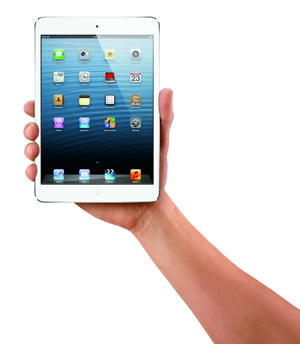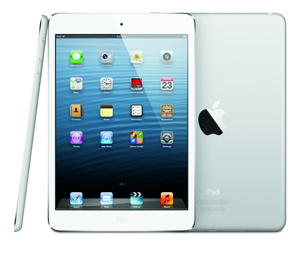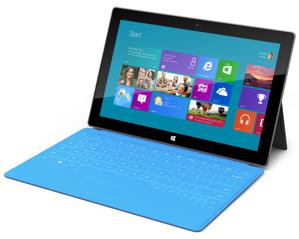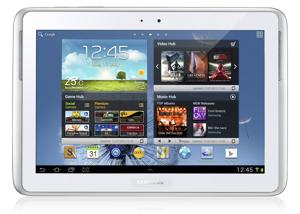
This past week alone saw the debut of not one but two new Apple tablets: iPad mini (from $329) and a fourth-generation iPad (from $499), now officially called iPad with Retina display. These two join the second- and third-generation ("new iPad") models.
Confused? You're not alone.
For a company known for its simple, minimalist approach to technology, they've made their current iPad offerings clear as mud.
Don't worry, as we're here to help put your finger on the right iPad for you and your budget. The following are a few things to keep in mind, to help you decide which one to go with — or dare we say it, another tablet platform altogether.
Size does matter
Let's get the obvious out of the way: some people just want a smaller tablet. At 7.9 inches -- nearly 2 inches smaller than all other iPads -- iPad mini is portable enough to fit in some purses, suit jackets and perhaps even your jeans' back pocket. Those who want an iPad primarily as an ebook reader will also find iPad mini lighter and thinner at 0.68 pounds and 0.28 inches, respectively; compare this to the latest 9.7-inch iPad that weighs 1.44 pounds — not the easiest for bookworms to hold for extended periods of time.
Do you really want an ereader?
If you're buying an iPad mini primarily as an ebook reader, remember standalone ebook readers are not only easier to read outside with its no-glare e-ink screens, but illuminated backlit screens have been proven to stimulate the brain rather than relax it, which might be good to know for those who like to read in bed. Also, at 10 hours of battery between charges, iPad mini can last as long as its big brother and other tablets, but dedicated ebook readers — like most Kindle, Kobo and Nook models — can last up to a month in some cases. Finally, dedicated ebook readers are less than $100, on average, compared to the starting price of $329 for an iPad mini. Apple's petite tablet can do much more, of course, but this is all just food for thought.

Base price
If you're buying brand new, iPad mini is the least expensive of all iPad models, followed by iPad 2 at $399 and iPad with Retina Display at $499. But be aware these are just for the Wi-Fi models and only with 16GB of storage. iPad mini with Wi-Fi + Cellular starts at $459 (16GB), while the same wireless radios in the iPad 2 will set you back $529. The latest iPad starts at $629 for Wi-Fi + Cellular (16GB). If this is too steep — and you really want an iPad -- you might consider sourcing prices for refurbished iPads from major retailers or second-hand iPads from online marketplaces like eBay or online classifieds sites such as Craigslist or Kijiji.
How much power do you need?
If you're looking for a powerhouse of a tablet, you should go with the just-unveiled fourth-generation iPad. It might've not received the same amount of media attention as iPad mini, unveiled on the same day, but this surprise announcement is newsworthy for serious gamers, video lovers, music creators and other demanding tablet owners. At the same price as the third-generation iPad (from $499), the new iPad with Retina display houses a A6X chip for performance that's twice as fast as the previous-generation A5X chip, and delivers up to twice the graphics performance, too. Wi-Fi is also twice as fast. The new iPad retains the same Retina display (3.1 million pixels), industry-leading 10-hour battery and support for more than 275,000 apps.
App support
Most -- but not all -- of the 275,000+ apps work with all generations of iPad. Some require more power under the hood, therefore it will say on the App Store if only the third- or fourth-generation iPad is required to run it. Others require a camera or two, therefore the apps won't work with the first-gen iPad from 2010. Also be aware iPad mini and iPad 2 have the same A5X chip, which isn't as powerful as the newest iPad and its A6X processor. Finally, while many apps have been optimized for the Retina display, only the latest iPad has this incredibly high-resolution screen (2048 x 1536 pixels) at 264 pixels per inch, compared to the iPad 2 and iPad mini's screen at 1024 x 768 resolution, at 132 pixels per inch. With all of this in mind, memory-intensive apps will work faster and smoother on the last two iPads, but on the flipside, iPad mini's smaller and lighter body means it's much easier to type with thumbs while holding it.
 Accessories
AccessoriesIf you've invested in a number of tablet accessories over the past few years — perhaps a speaker dock, in-car charging kit or fitted cases to protect your investment — remember the latest iPads have ditched its 30-pin connector with the new Lightning connector, therefore you're likely going to need an adaptor [LINK], such as the Lightning to 30-pin Adapter ($29) or the 0.2-meter Lightning to 30-pin cable ($39). To make matters worse, both of which are still not available at the time of writing this. Even if you buy these adaptors, they'll work for charging, synching and audio — but not video. Your older AirPlay- and Bluetooth-enabled accessories will work with news iPads, though, as they're wireless, but they won't be able to charge them up. iPad mini Smart Covers cost $39. Smart Covers for the full-sized iPads cost $39 to $69, depending on the material.
 Galaxy NoteThere are other tabs, too
Galaxy NoteThere are other tabs, tooNewsflash: iPad isn't the only game in town. Those in the market for a new tablet have many other options to consider, primarily from the Android camp (from $99 to $499) but also Windows 8-based tabs beginning to surface. Those who like many hardware options (in price, size and power) and more freedom and flexibility in their operating system, should go with Android. Google Play now has more than 500,000 apps, too, but not all work (or work well) on tablets and/or all versions of Android. Windows users, on the other hand, might opt for the Windows Surface RT (32GB; from $499) as it's ideal for content creation along with media consumption — especially if you go with the optional touch cover ($119.99) that doubles as a keyboard. Also included are familiar apps like Microsoft Word, Excel, PowerPoint and others.








0 comments:
Post a Comment